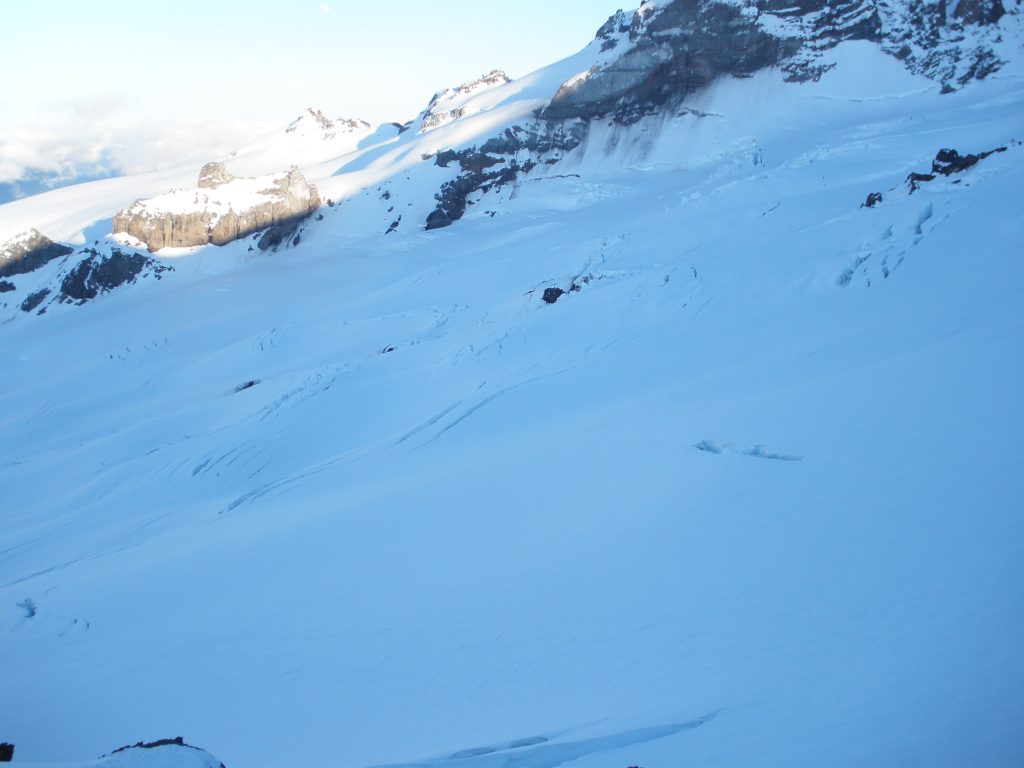Can a water-filled crevasse reach the bottom surface of a glacier? Materials engineer and glaciologist Johannes Weertman asked precisely this question in the early 1970s, and found that the answer was a resounding “Yes!” (as long as there is enough meltwater to keep driving it downward). Crevasses that receive a lot of meltwater can, and regularly do, reach the bottom of glaciers, including the massive Greenland Ice Sheet.

What is less certain is how typical it is for a crevasse to hydrofracture all the way to the bottom. There are thousands of crevasse fields all across the Greenland Ice Sheet, and each crevasse field itself has hundreds of individual crevasses. Some of them receive enough water to reach the bottom, but how many do not? This is unknown.
Using a numeric model based in part on the work of Weertman on the elastic deformation of a water-filled crevasse, with additional components for creep closure and freezing of water inside the crevasse, we calculate the expected evolution of typical water-filled crevasses in crevasse fields across western Greenland. We find that for the most part, crevasses can reach depths of a few hundred meters — NOT the bottom of the ice sheet — without healing (fully closing up or refreezing).
In the example below, meltwater drives a first-year crevasse to ~250 m depth over the summer, but all the water refreezes over the first winter, and the crevasse heals entirely. In subsequent summers, the crevasse (if it reforms) will penetrate deeper because the ice is now warmer and cannot refreeze the water as rapidly.

Interestingly, partially healed crevasses may host englacial water bodies (see panel e above) that can persist for years to decades as they slowly refreeze. This might be a significant component of the Greenland meltwater budget, or it may be a more trivial volume of water.

I’m always looking to add motivated students to my research group. I am particularly interested in working with students from minoritized backgrounds. If you’re interested in researching this topic, drop me a note and we’ll explore a research fit! Please include in your inquiry email your background, scientific interests, and research skill set or any research experience.
You can apply for a graduate research position at https://arts-sciences.buffalo.edu/earth-sciences/apply.html. UB Earth Sciences does NOT require the Graduate Record Examination (GRE) for admission to the graduate program.

